Vignesh Ishwar
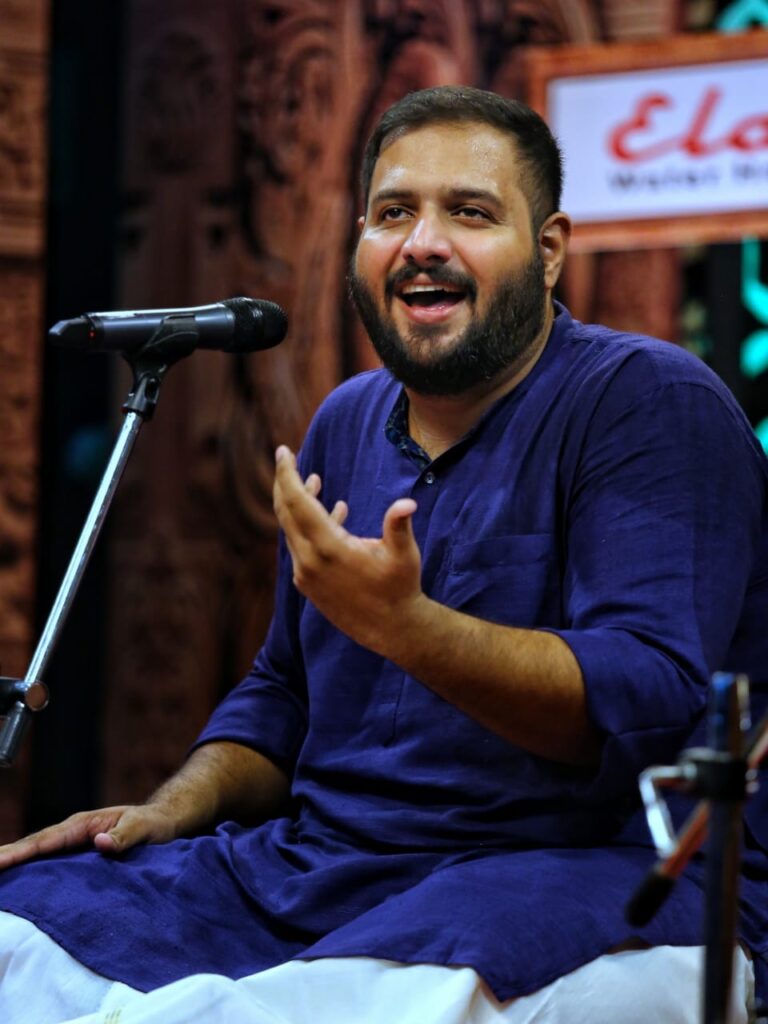
At weddings, she noticed that the normally restless child never asked to be taken home – he would run around and stand happily by the nAdhaswaram ensemble. Taking this as a sign, Vignesh Ishwar’s grandmother, Sarada Krishnan, enrolled him for vocal lessons at age 4. The teacher was recalcitrant initially, given the young age, but Sarada persisted and he was taken under the proviso that it was on a trial basis for a month.
A version of this article appeared in The Hindu. Many thanks to Sri. Vignesh Ishwar for collating media for this page.
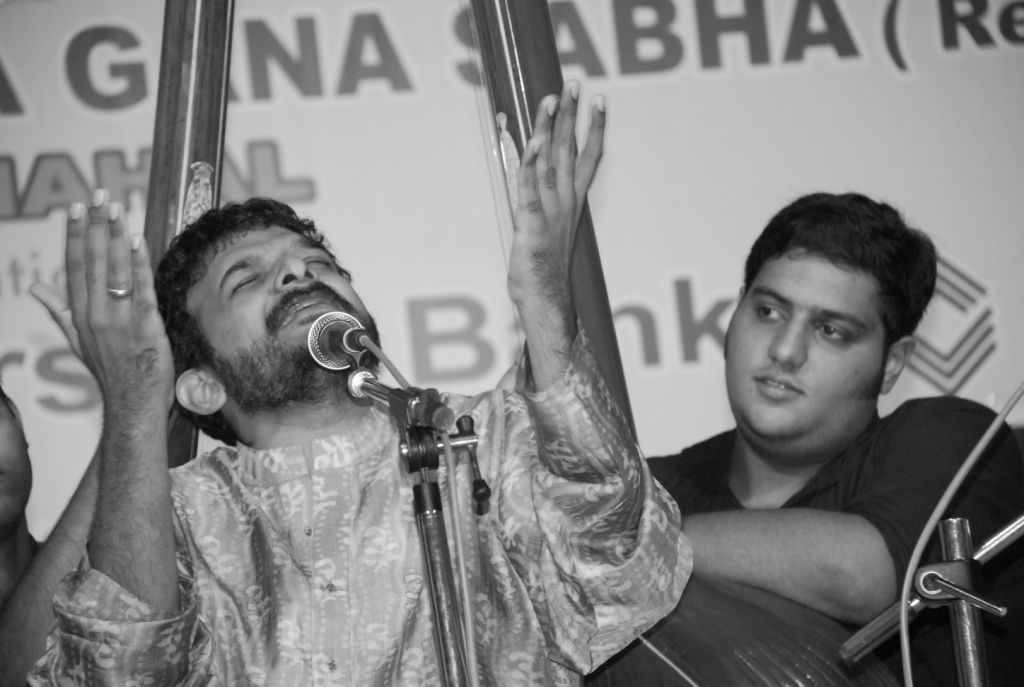
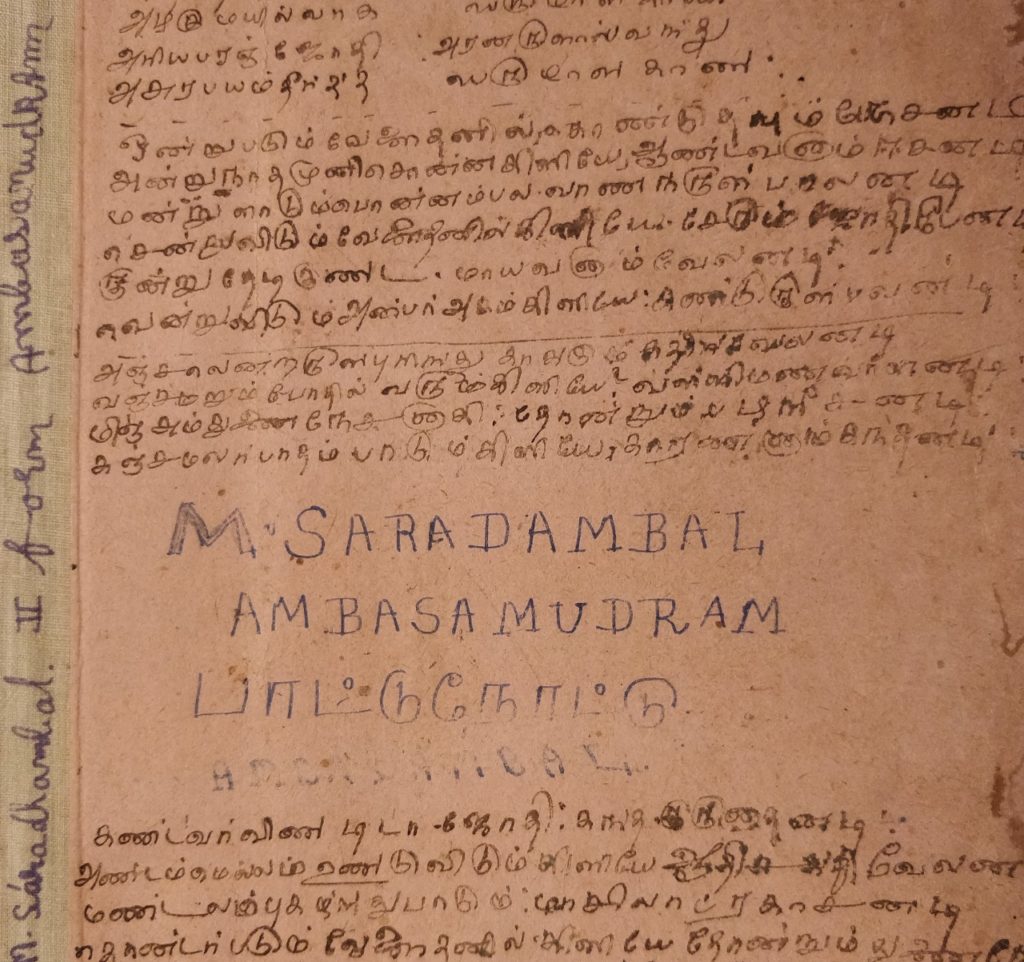
Sarada had learned music passionately under Mukkai Sivaramakrishna Bhagavathar, a student of Palakkad Rama Bhagavathar who, in turn, was a student of Gayaka Shikamani Palakkad Anantharama Bhagavathar. She had had daily classes for some 4-5 years and maintained a methodical record, written in impeccable handwriting, with notation of some 200 kriti-s.
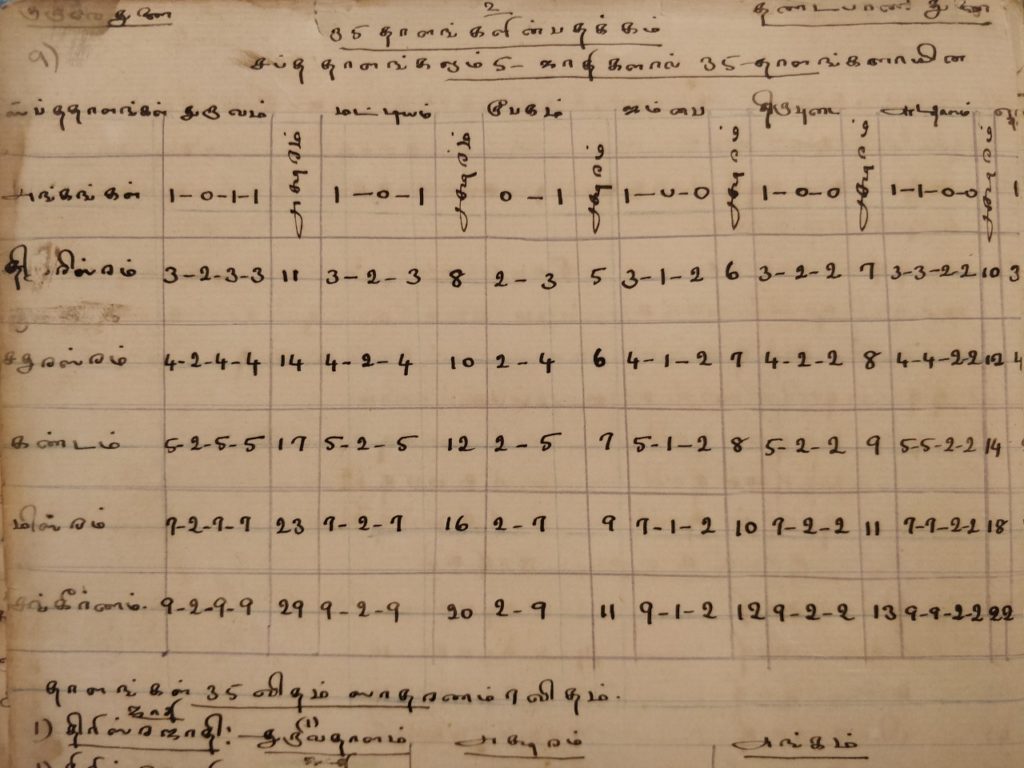
However, she had never performed. “It was a transference. She wanted me to do what she could not – become a performer. I am singing now only because of pAtti,” says Vignesh who received the Shanmukha Sangeetha Shiromani award last year. This young vocalist, gifted with a sonorous and ringing voice, continued with that first teacher in Mumbai, Palghat TS Anantharaman Bhagavathar (TSA), grandson of Gayaka Shikamani Palakkad Anantharama Bhagavathar, for almost two decades, before joining TM Krishna.
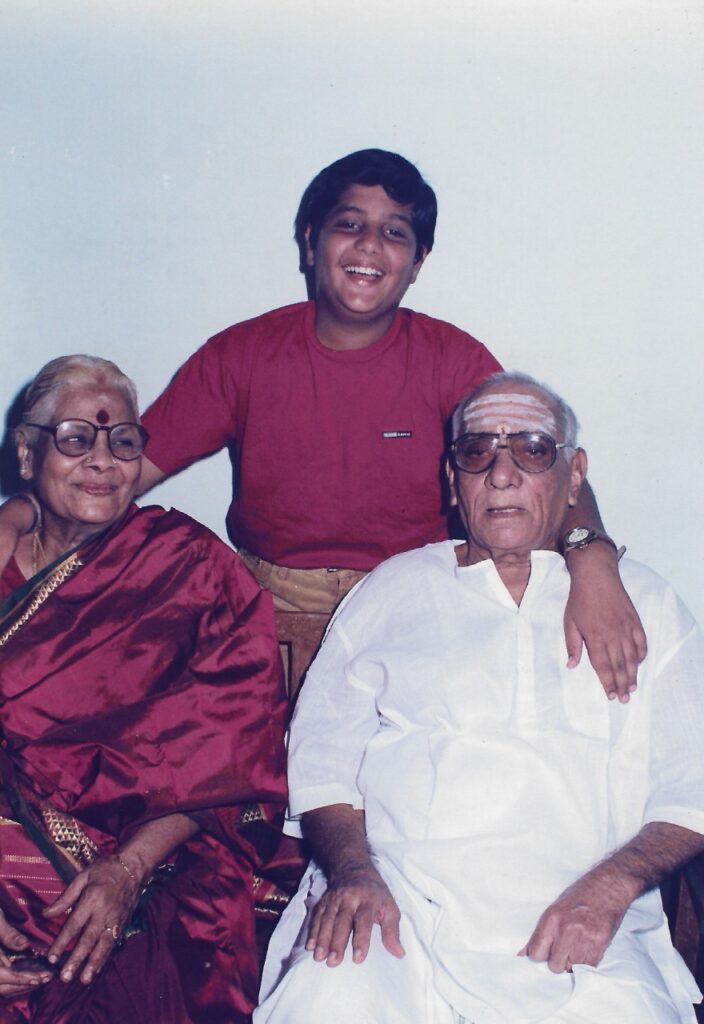
“Amongst the rich crop of very skilled and talented youngsters, Vignesh really stands out. He is blessed with a dexterous voice with tremendous felicity. Those with good voices often do not exercise discretion in using it. Krishna, however, really knows how and how not to use the voice. He has taught this well to Vignesh who has internalized this. His music is pleasant and satisfying without excesses,” says RK Shriramkumar, senior musician.
N Vijay Siva, senior vocalist, adds, “Both on and off stage, he carries himself with ease. He combines the rich assets of his guru’s music with his own astute perceptions – a rare combination for his age, besides the sensitive aesthetic boundaries he has drawn for himself. He possesses some vital ingredients, apart from voice energy, that can help him establish a durable and successful career.”
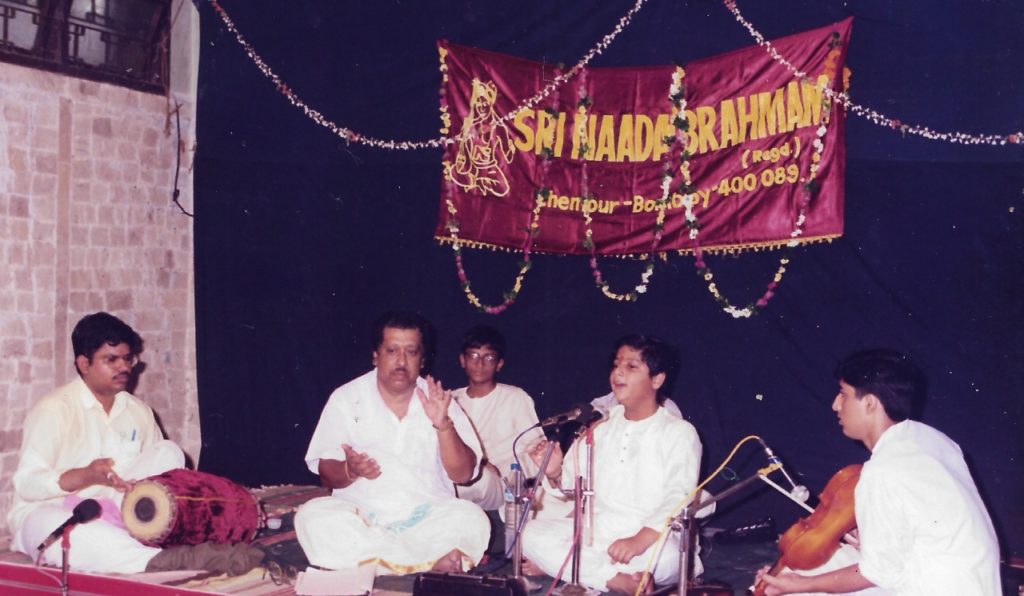
On his initial years in music, Vignesh says, “TSA Sir laid a thorough and extremely solid foundation. It took 3 years to reach varNam-s.” His grandmother would escort him to his classes, listen outside the door and take methodical notes on TSA’s suggestions. “She used to make me sing the alankAram-s backwards in tri-kAlam, in swaram and in akAram,” he says, felicitously demonstrating. TSA added the further variation of singing each line of alankAram in a different rAgam, changing one note each time.
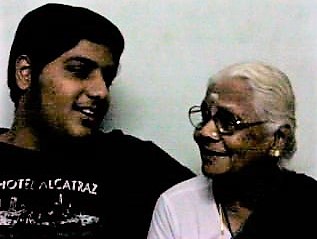
“We had regular screaming matches at home,” Vignesh says. “It was a constant negotiation of my trying to avoid practice, my mother getting me to study and my grandmother making me sing – pAtti always won in the end. Come rain, shine or illness, I had to practice. I have sung even through fever AND throat infections.” If he made a single mistake, he would have to repeat the entire cycle, all over again. Creditably, he never stopped music classes even through high school. “Practice sometimes did not happen then. However, my guru never rubbed it in if I hadn’t; class just got extended a little and I even learned new pieces.”
To initiate students into AlApanA, TSA would have a template whereby he would impart important phrases of the rAgam, ask students to repeat them, thereby demonstrating how to build up the rAgam. Once they assimilated that template, he would show them how to approach it differently. At least 2 or 3 kriti-s would be taught in a rAgam before an AlApanA was attempted.

In 1999, Vignesh heard TM Krishna sing in Mumbai. “I was utterly smitten,” he says. He began learning from Krishna on Vijayadashami 2008, with TSA’s go-ahead. “A fan-boy became a student,” he says matter-of-factly. Until he moved to Chennai in 2011, Vignesh, on a CCRT scholarship from 2008-2010, learned from TSA in Mumbai and from Krishna in Chennai. “Both were magnanimous enough to allow that.”
Sangeetha Sivakumar, senior vocalist, says, “Initially when he started out as a performer, he had a fast-paced approach to this music and the tendency to show off his capacity to sing brigA-s (which is indeed very appealing to the listener!). I have seen Vignesh go up the learning curve, adapt some of the elements of his guru’s style, blend it intelligently with his own strengths to evolve his own style. It is indeed a joy to listen to him sing!”
Vignesh felt at home in Chennai instantaneously. Mridangist Akshay Anantapadmanabhan had also newly relocated and both shared a flat for 5 years where other compatriot artistes would also pile on during the season. Such camaraderie, and the hearty welcome of Krishna’s other students, made Vignesh feel like he had always belonged.

Good at studies (“my mother was insistent that I studied well and be self-sufficient”), Vignesh oscillated between pursuing music and academics. Krishna roped Vignesh into the CompMusic project he was advising under the mentorship of Dr. Hema Murthy. With his Bachelor’s in Electrical Engineering, Vignesh was a natural fit into IIT Madras that coordinated the Carnatic music aspects. Vignesh finished his Masters in Barcelona at Universitat Pompeu Fabra which oversaw that project. The topic was “Predominant Melody Extraction in Carnatic Music.” He was most interested in pursuing a PhD in Engineering but realising it would mean years of music necessarily taking a back seat, decided against plunging full time into music instead.
“Krishna anna got us to apply ourselves and push beyond our mental confines.” Vignesh recollects things they would do: “rAgam, neraval and swaram on round-robin basis; one student singing AlApana from Sa to Pa, the next from Pa to Sa and so on; one Avartanam swaram-s. He has asked me to sing Bhairavi without the chatusruti Dha – I had to sing until I couldn’t anymore. If I repeated phrases, I was to begin again. He might ask me to sing just around the Ni or the Pa in Surutti, for example.” If a student got stuck, “What are the ways you can extricate yourself?” Krishna would ask. If they still needed assistance, he would pitch in.
Vignesh continues, “He would give assignments – learning new rAgam-s, singing swaram-s at unusual places for known songs and at usual places for unknown songs. He would tell us to sing neraval for songs we don’t know. Neraval is a transition of sounds subject to rAgam, tALam and spacing of syllables – it, therefore, requires complete internalization of that line. Neraval is harder with lesser syllables. He would, thus, ask us to practice singing neraval for varNam-s – madhyama kAla neraval is a real exercise. We would go through some rounds keeping each syllable exactly in place before we started exploring stretching the placements. Time was totally fluid. We have spent stimulating hours, sometimes entire days, at Krishna anna’s – the whole family has cheerfully accommodated us.”
A prolific performer, he comments on concert tension. “It is always there – if it isn’t, one will not do well. To be a performer, one needs supreme confidence – however it should be combined with a certain respectful nervousness, a reverence for the space we are going into. This keeps us in check. ‘Alatshiyam’ should not be there. A stage is a stage. Every kutcheri should be approached with deference.”

Vignesh has generally followed the ‘conventional’ kutcheri pattern while his Guru, Krishna, has been exploring different paths, many controversial. Vignesh says that Krishna himself had asked his students to follow the existing paddhati to first understand the current system. Vignesh clarifies, “Whatever Krishna anna does is extremely aesthetic and has had precursors – singing one AlApanA after another, for example. Bhatkande mentions in his book that Bangalore Nagarathnamma would do so, with the audience requesting specific ragas. Or a tAnam before a varNam – it is actually a natural transition into a tAna varNam. I have not known Krishna anna to do anything incongruent.” Vignesh explains that Krishna asks his students to always question and be completely aware of what one is doing – is something sung a certain way only because one is conditioned to do so? Might there be a more fulfilling manner of presenting the item? “Krishna anna has taught me to completely focus on what I am singing in the present moment. If I worry about what comes next, the present will be affected. The intellectual and the emotional elements cannot be separated. They go hand in hand.”
Sangeetha Sivakumar elucidates more, “Vignesh has chosen to train under a very intense and complex musician who has a very different approach to the art. For example, His Guru’s handling of the raga (in any form – AlApanA, composition, neraval or kalpanA swarA) is very unique – it is about constantly trying to widen the space between two notes and see how much one can explore within, going deeper and deeper, at the same time keeping the Carnatic sound intact. Krishna’s music is not easy to emulate, and it is indeed a challenge for each of his students to figure out what to take and what not to according to their musical sensibilities and abilities.”
She sums up, “Vignesh is respectful to his seniors, friendly with his peers and sensitive to the numerous issues and complexities that riddle this field. He is lucky to be endowed with a charming voice and a natural brigA style, with the right ‘weight’ suited for Carnatic music. But that alone is not enough. He has abundant sensitivity to the Carnatic sound, and an understanding of its nuances – the hallmarks of a true artiste.”
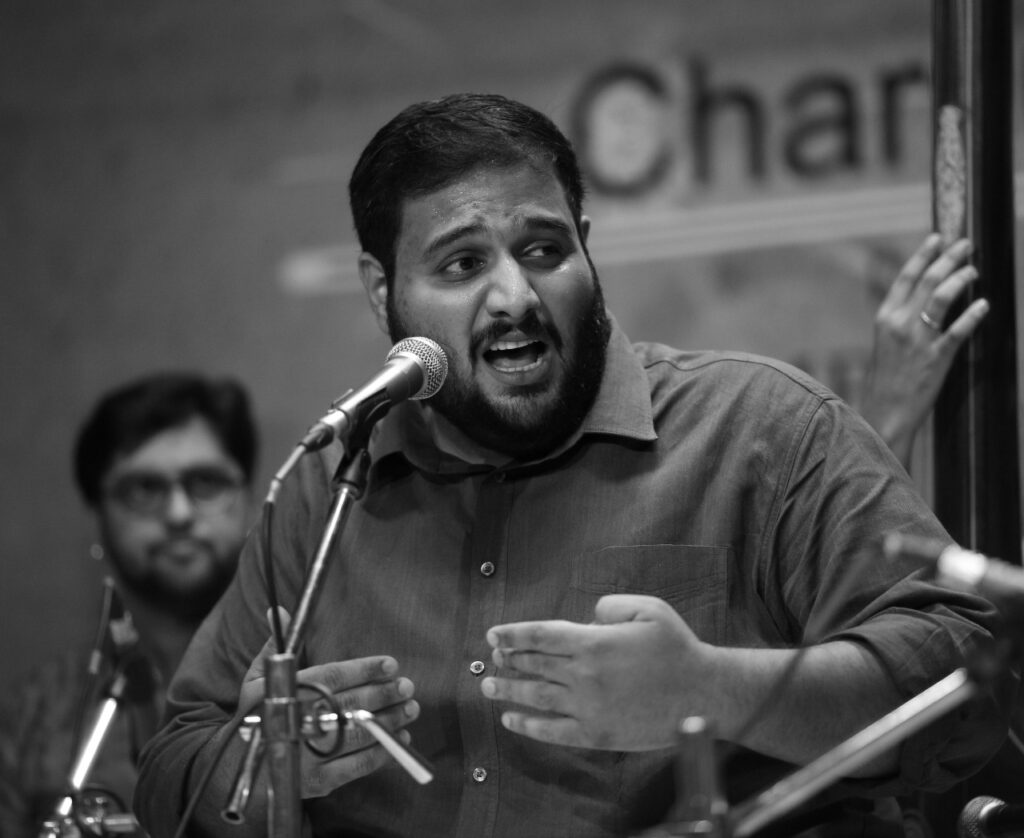
What a beautiful piece on Vignesh. Enjoyed it thoroughly from start to finish much like his Guru TMK s music and his sishya Vignesh s. TMK is blessed and his sishya a even more! Be it Ravikiran or Vignesh…it is truly our good fortune to listen to such good sangeetam. May the Guru n his sishyas excel n treat us as always! Thanks a pile Lakshmi for this. Beautifully written.
Thank you for the kind words.
Very well written article – great insights into Vignesh Eshwar ‘s growth as a singer! Hats off to the patience and persistence of his grandmom , which has paid off ! Her notebook is a collector’s item ❤️🙏🏾
The article also gives us a glimpse into the manodharma and views of the Teacher , as well as the Taught !
Thank you for writing.
It gives how his journey in Music from beginning to date nicely captured Especially referring his Guru TMK as ANNA it is really touching
I have seen Vignesh as a extraordinarily talented small boy in Mumbai city. He has blossomed into a brilliant artiste, with a conviction to use his musical gifts aesthetically. This sets him apart from musicians of his age. Wish you the best dear boy.
A nice article published by ‘The Hindu’ about Our Sri Vignesh..Long back his present growth in Carnatic was well expected..we,the Mumbaikars feel proud of him…Pranam to his Gurus and Parents and Grand Parents..